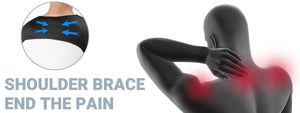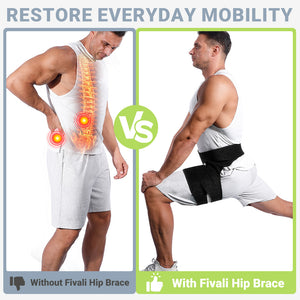How to Fix a Hunchback?

Hunchbacks are a widespread postural problem that, if left untreated, can create pain and affect your health. In order to help readers with the comprehensive method of improving and treating hunchbacks, this article will provide beneficial tips on postural alignment, stretching of the spine, muscle strength, and preventative measures as well. The article by Fivali will also encourage the importance of continuous care and precaution.
Posture Correction
Fixing your posture is a vital first stage in the treatment of hunchbacks. The following advice can help with posture:
- Sit up Straight: Ensure that your feet are flat on the floor and that your back is straight as you sit. To assist in maintaining a neutral posture for your back, choose a chair with strong lumbar support.
- Stand Tall: Raise your head, shoulders back, and spread your feet shoulder-width apart of each other. Equalize the gravity with both legs of the body.
- Maintain a Comfortable Posture: Refrain from being hunchbacked or tighter in the shoulders. Endeavor to allow them to be calm and subdued as you go along.
- Align Your Hips, Shoulders, And Ears: While standing, make sure your shoulders and hips are in line up with your ears. All this will help to maintain a neutral spine posture.
- Employ a Posture Corrector: If you find it difficult to keep your posture correct, you might want to give one of these a try. Such tools can help reinforce the bones that sustain the muscles that govern positive postures.
Development of correct posture is a progressive program that requires consistent effort. You'll gradually improve your posture, which will help you get rid of your humpback.
Spine Stretches
Stretches for the spine are a good method to help with a humped back and to increase flexibility and posture. Here are a few typical methods for stretching the spine:
- Bridge Stretch: Lying on your back with your legs flattened on the floor and with knees bent. Generally raise your hips while contracting your glutes and pressing on your heels. Despair for a while, maintain this position and then slowly ease your glutes all the way back to the original position. Duplicate several times.
- Cat-Cow Stretch: From the ground on all extremities, place your hands directly under your shoulders and your knees under your hips. With a deep breath, lift your sternum and breasts toward the ceiling by arched back (cow position). Breathe out as you round your spine, bringing your belly button in towards your spine and burying your chin into your chest (cat stance). Breathe as you move through multiple repeats of this flow.
- Child's Pose: Place your hands on your knees at the beginning, then raise your arms forward and sit with your hips back on your heels. Leave your forehead resting on the mat or floor. Your spine is lengthened and tension is released with this easy stretch.
- Seated Forward Bend: Sitting on the floor, straighten your legs forward. Reach forward, hopefully bumping your toes or grabbing your ankles, then slowly hinge from your hips. Use a strap or towel around your feet for support if you are unable to reach that far. While stretching your spine, get a feel for the lower back and hamstrings.
Don't forget to get serious about stretching within your comfort zone. Spinal stretches are a great way to release stress, increase flexibility and help straighten your back. Do these exercises regularly.
Continuous Attention and Prevention
Maintaining proper posture and treating a humped back require ongoing care and prevention. The following advice will help you continue to be proactive:
- Be aware of your posture: Whether you're sitting, standing, or walking, keep an eye on your posture throughout the day. Remind yourself frequently to keep your alignment correct and to refrain from slouching or hunching.
- Take breaks from extended sitting: If you live a sedentary lifestyle or spend long hours at a computer, make it a practice to take regular pauses. To release any stress that may have built up in your shoulders and back, get up, stretch, and move about.
- Exercise regularly: Take part in activities that increase flexibility, and strengthen your back and core muscles. Strength training, Pilates, yoga, and swimming are a few exercises that might help with spinal health and posture.
- Stretch and mobilize frequently: Make stretching a part of your everyday practice to maintain your muscles' flexibility and avoid tightness. To offset the effects of bad posture, concentrate on stretches that target the neck, shoulders, chest, and hips.
- Invest in ergonomic setups: Encourage correct posture by making sure your sleep and work spaces are ergonomically correct. Work with pillows that improve spinal alignment, adaptable chairs and supported mattresses instead as well.
- Keep a healthy weight: Being overweight can pull on the spine and lead to worse posture. Use balanced diet and regular exercise to limit your weight at all times.
- Seek expert assistance when necessary: If you have chronic discomfort or a serious hunchback, you should take into account to visit a physiotherapist or chiropractor. They can provide customised advice, exercising and treatments to meet your particular requirements for your condition.
With continually monitoring your postures and taking preventative measures, you can correct hunchbacks, strengthen your spine and minimise the opportunity for new problems to develop. At the end of the day, you'll be able to maintain good posture. It also depends on self-awareness and persistence.
Reference
Fix Your Posture! 10-Minute Routine To Eliminate “Hunchback”
-
Posted in
Back pain causes, Healthy Lifestyle, Recovery













